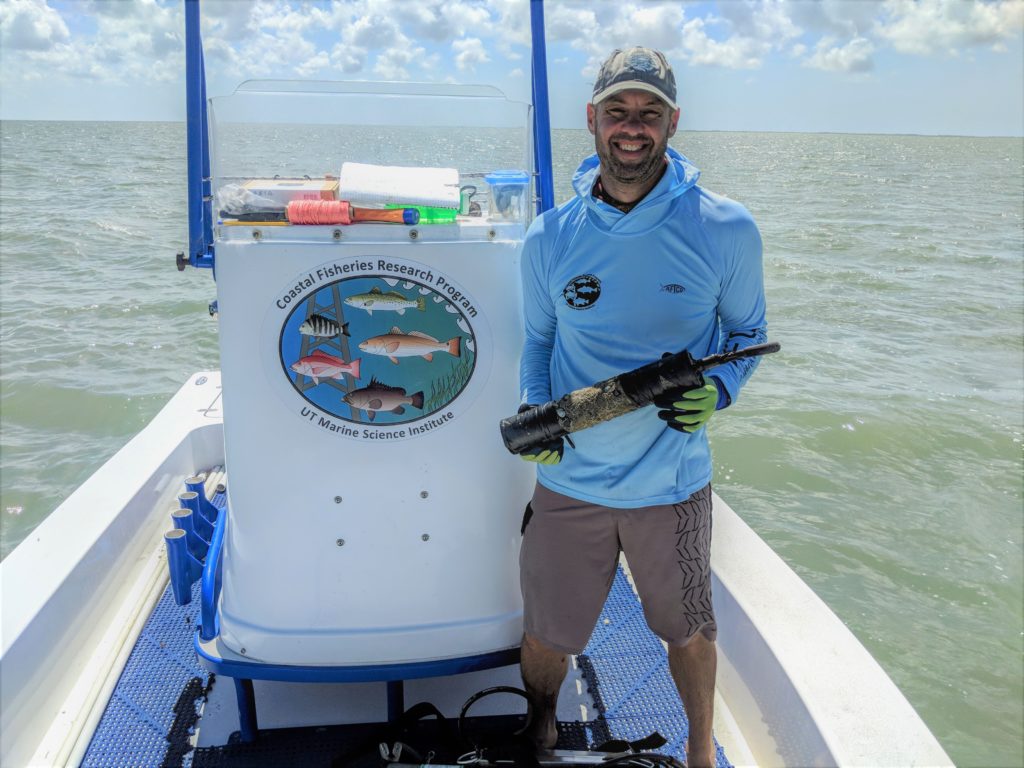
AUSTIN, Texas — Even a Category 4 hurricane doesn’t kill the mood for coastal fish – and that’s good news for all species, as well as for a multibillion-dollar recreational fishing industry. As extreme weather patterns threaten to bring more and larger storms to the Gulf Coast, new findings from the University of Texas at Austin’s Marine Science Institute show some important fish species are able to continue spawning even in a severe storm.
“This data gives us a little insight into how key species will handle changing and unpredictable conditions,” said Christopher Biggs, a Ph.D. candidate studying fisheries ecology and lead author on a paper published this week in Biology Letters. “They are somewhat preadapted to this. They regularly deal with changing situations. They might be better suited to handle the changing climate in the future.”
Biggs and a team of scientists from the University of Texas Marine Science Institute (UTMSI) and the University of Florida discovered that spotted seatrout kept spawning in late August 2017, even as the eye of Hurricane Harvey passed overhead, bringing with it windspeeds of up to 134 miles per hour and a storm surge of 8-10 feet.
“These fish are resilient and productive, even in the face of such a huge storm,” Biggs said. “On land, it was complete destruction, but these fish didn’t seem disturbed.”
Understanding the trout’s reproductive patterns and habitat needs is critical for the Texas coast, where sport fishing generates about $2 billion annually for the local economy, according to the Texas Parks and Wildlife Department. The murky waters of the Gulf of Mexico can make tracking the seatrout difficult, so the scientists study spawning patterns and behavior by placing underwater microphones in known spawning locations and leaving them there to record what follows.
Seatrout are actually not trout but a type of drum fish, and males make a distinct pulsing noise when spawning. The sound allows researchers to map and observe changes at spawning sites — information that state and federal agencies can use to help maintain healthy, sustainable fisheries.
In reviewing recordings captured in 2017, the scientists were surprised to find that the fish were spawning every day during the spawning season. And when Hurricane Harvey hit, they were more surprised that the storm did not disrupt the spawning. The only difference was that immediately after the storm, the fish began spawning 2.5 hours early. Over the course of the five days after the storm, the spawning patterns returned to normal.
The time difference was possibly due to water temperature differences brought on by the storm, Biggs noted, as the temperature returned to normal at about the same rate as the spawning patterns.
“Seatrout are an important part of the ecosystem,” Biggs said. “They are one of the most popular recreational fish. They are a top predator in the estuary and a favorite food for dolphins.”

The data coming out of the hurricane is a bright spot for the Marine Science Institute, which had several other projects severely disrupted by Harvey. Most of the buildings on the campus were damaged, equipment worth millions of dollars was damaged or destroyed, and many experiments were lost or set back as a result of the storm.
Repairs continue on the MSI campus. The Estuarine Research Center, one of three main laboratory buildings, reopened for scientists and students in September. The campus is expected to partially reopen to the public in summer 2019.
Brad Erisman, an assistant professor of marine science based at UTMSI, and Susan K. Lowerre-Barbieri of the University of Florida contributed to the research. The research was funded by the Texas State Aquarium WCCR Fund; a Harvey Weil Sportsman Conservationist Award; a Mission-Aransas NERR Graduate Research Assistantship; the Jack and Valerie Guenther Foundation; and J. and T. King.
